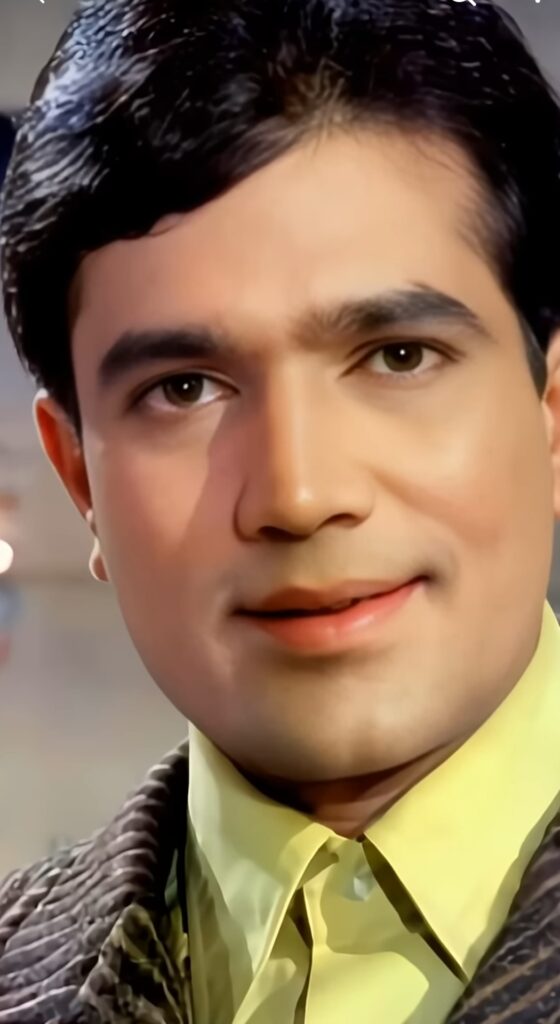
Bollywood’s First Superstar, on His 13th Death Anniversary
On July 18, 2025, we remember the eternal romantic who redefined stardom and left an indelible mark on Hindi cinema.
“Zindagi ko bahut pyaar humne diya,
Maut se bhi mohabbat nibhaayenge hum,
Rotey rotey zamane mein aaye magar,
Hanste hanste zamane se jaayenge hum.”
These poignant lines from the 1970 Rajesh Khanna-Sharmila Tagore starrer ‘Safar’ echo the spirit of Rajesh Khanna, Bollywood’s first superstar, fondly called Kakaji, whose charm, charisma, and cinematic brilliance continue to captivate hearts even 13 years after his passing on July 18, 2012. On his 13th death anniversary, we celebrate the man who, like his iconic character Anand, taught us that life is to be lived with love, laughter, and an unyielding spirit, for “Anand kabhi mara nahi karte”—Anand never dies.
The Birth of a Phenomenon
When Rajesh Khanna burst onto the silver screen in the late 1960s, Hindi cinema was already graced by legends like Dilip Kumar, Raj Kapoor, Dev Anand, and emerging stars like Dharmendra and Shammi Kapoor. Yet, none scaled the dizzying heights of fame that Rajesh Khanna achieved. With his twinkling eyes, mischievous smile, and a style that was uniquely his—think Guru kurtas, bell-bottoms, and that signature head tilt—he became the heartbeat of a generation. His melodramatic acting, complete with sidelong glances and playful prancing, might seem exaggerated today, but in the 1970s, it was pure magic. As the University of Bombay (now Mumbai) acknowledged by introducing a chapter titled ‘The Phenomenon Called Rajesh Khanna’ in its Foundation Course during 1970–73, he was not just a star—he was a cultural juggernaut.
From 1969 to 1974, Rajesh Khanna delivered an unprecedented 15 consecutive hits, a feat unmatched in Bollywood history. Films like Aradhana, Do Raaste, Safar, Kati Patang, Anand, Amar Prem, Haathi Mere Saathi, Bawarchi, Namak Haram, and Aap Ki Kasam were not just movies—they were events. His on-screen chemistry with actresses like Sharmila Tagore, Mumtaz, and Asha Parekh, coupled with his soulful partnership with Kishore Kumar, whose voice became the soul to Khanna’s body, produced timeless songs like Mere Sapnon Ki Rani, Zindagi Ek Safar Hai Suhana, Chingari Koi Bhadke, and Yeh Jo Mohabbat Hai. As Khanna himself said, “Kishore was the soul, I was the body,” their collaboration defined an era.
The Madness of Stardom
Rajesh Khanna’s stardom was unlike anything India had seen. Young men copied his hairstyle, parting their hair in the middle, and donned Guru kurtas to emulate their idol. Women, swept away by his romantic aura, wrote letters in blood, kissed his car leaving lipstick marks, and even secretly “married” his photographs. His fans’ devotion was unparalleled—college campuses buzzed with boys on Rajdoot bikes yodeling Zindagi Ek Safar, while girls swooned over lines like “Yeh aansoo pochh do Pushpa, I hate tears” from Amar Prem. He wasn’t just a star; he was a way of life, teaching a generation to love fiercely and live vibrantly.
His versatility shone through in every role. In Aradhana and Kati Patang, he was the ultimate romantic; in Anand and Safar, he brought poetry to tragedy; in Aavishkar, he mirrored his own life’s complexities as Amar; in Bawarchi and Anuraag, he excelled as a character actor; and in Red Rose, he chilled audiences with a rare negative role. Even in his later years, films like Avtaar, Amrit, and Aakhir Kyon showcased his enduring talent, proving that his Midas touch lingered.
A Life of Love and Loss
Rajesh Khanna’s personal life was as dramatic as his films. In 1973, at the peak of his fame, he shocked the industry by marrying 16-year-old debutante Dimple Kapadia, fresh from her blockbuster Bobby. Fans expected him to wed Anju Mahendru or Mumtaz, his frequent co-star and rumored love interest, but Dimple became Mrs. Khanna. Their marriage, however, was turbulent. Rajesh, protective of his family, insisted Dimple prioritize motherhood over her career, a decision he later regretted, saying, “To curb talent is a crime.” The couple separated, and Khanna’s life took a darker turn. Other relationships, including one with Tina Munim, filled the void, but the joy that defined his early years seemed to fade.
As Amitabh Bachchan rose as the “Angry Young Man,” Khanna’s star dimmed. By the 1980s, his films struggled, and he retreated to his iconic bungalow, Aashirwad, becoming a recluse. His foray into politics in the 1990s, representing Congress as a Member of Parliament from Delhi, was an attempt to reconnect with the masses, but he later admitted, “When an actor neglects family… how will he do justice to politics?” His later years were marked by health struggles and solitude, yet his legacy was reaffirmed when the IIFA honored him with a Lifetime Achievement Award in 2009, presented by none other than Amitabh Bachchan, whose career Khanna had inspired.
The Eternal Anand
On that rainy afternoon of July 18, 2012, as a gentle drizzle fell over Aashirwad, Rajesh Khanna slipped away at 69, surrounded by family, much like his character Anand, who succumbed to cancer in the 1972 classic. His death felt like the end of an era, yet his spirit endures. As Amitabh Bachchan recalled, “What hysteria Rajesh Khanna invoked… I used to be constantly asked, ‘How does he look?’ and ‘What does he do?’” Khanna himself, reflecting on Bachchan’s rise in Namak Haram, humbly said, “I knew my time was up.”
But Kakaji’s time is never truly up. His songs still play on radios, his films stream on screens, and his dialogues—“Zindagi kaisi yeh paheli haaye”, “Jeevan se bhari teri aankhe”—resonate in our hearts. He taught us to love, to laugh, to live. Whether it’s renting a boat on the Ganga to croon Chingari Koi Bhadke or wiping away tears with a smile, Rajesh Khanna’s legacy is immortal.
On his 13th death anniversary, we salute Kakaji, the baby-faced superstar who became Bollywood’s first phenomenon. He came like a storm, left like a breeze, but his magic remains, forever etched in the annals of Hindi cinema.
Rest in peace, Rajesh Khanna. You’ll always be our Mere Sapnon Ka Raja.
Hasnain Naqvi is a former member of the history faculty at St. Xavier’s College, Mumbai





